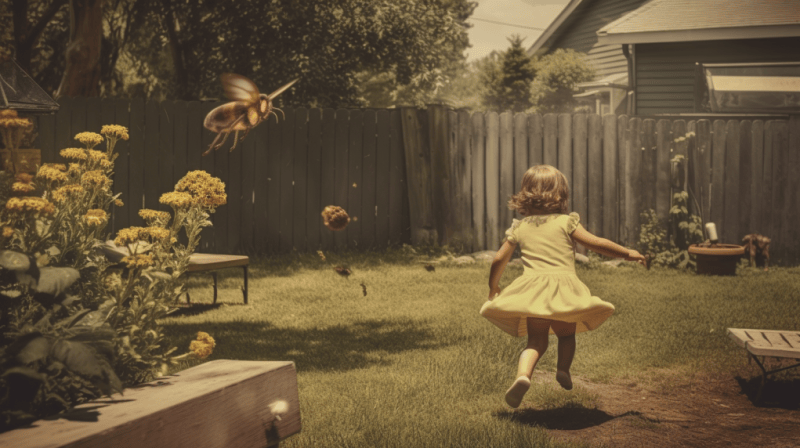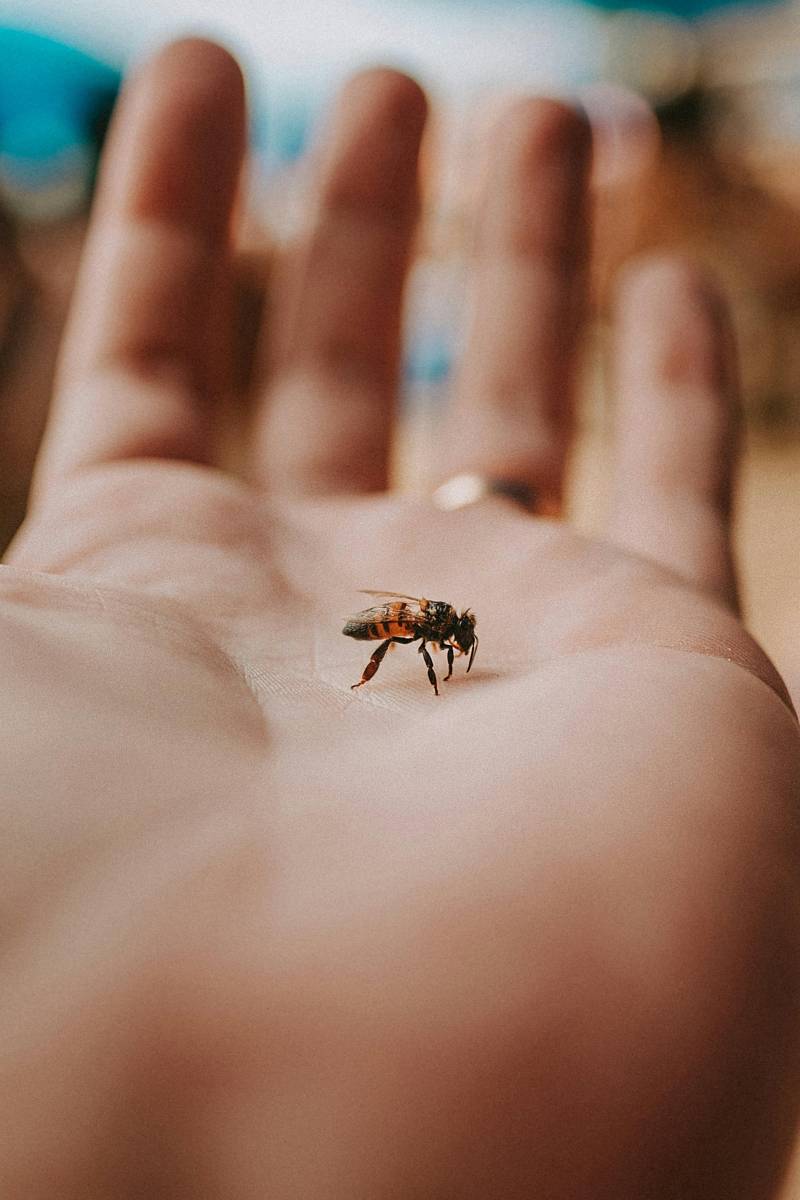As dads, we want our kids to explore the great outdoors fearlessly, but bug bites can quickly turn adventure into misery. Beyond the tears and itching, some bug encounters pose serious health risks that every parent needs to understand. This guide cuts through the buzz to give you practical, proven strategies for protecting your kids from harmful insects while keeping outdoor fun alive. From backyard BBQs to camping trips, you'll learn exactly what to do, when to do it, and how to handle issues when they arise.
How Many Kids Do You Have?
- Protecting children from bug bites requires a combination of prevention strategies including proper repellent use, protective clothing, and creating bug-resistant environments in your yard.
- Different seasons bring unique bug challenges, with spring and summer requiring the most vigilant protection against ticks and mosquitoes.
- DEET-based repellents are most effective for children over 2 months old, while natural alternatives need more frequent reapplication.
- Creating a bug-resistant yard through proper maintenance and smart landscaping provides a first line of defense against harmful insects.
- Regular pet protection is crucial as family pets can bring dangerous bugs like ticks and fleas into close contact with children.
Why Bug Protection Matters: The Real Deal
Let's cut to the chase - bugs aren't just annoying, they can cause real problems for kids. Here's what you need to watch for:
Direct Threats:
- Bee and wasp stings can trigger severe allergic reactions, sometimes without warning - even in kids who've never had problems before
- Spider bites (especially from brown recluses and black widows) can cause serious reactions that need immediate medical attention
- Tick bites can be sneaky - they often go unnoticed until problems develop
- Mosquito bites can lead to serious scratching and potential skin infections
Hidden Risks:
- Ticks can transmit Lyme disease, which often starts with a bull's-eye rash and flu-like symptoms
- Mosquitoes in many areas can carry West Nile virus
- Some insects carry bacteria that can cause infections even from small bites
- Stinging insects can leave stingers behind that need proper removal
The Good News: Most bug encounters are completely preventable with the right approach. Think of bug protection like putting on sunscreen or a bike helmet - it's just part of keeping our kids safe outdoors. The rest of this guide will show you exactly how to do that without turning every outdoor adventure into a hassle.
Dad Pro Tip: Keep photos of any concerning bites on your phone, with a ruler or coin next to them for size reference. This helps doctors track changes if the bite gets worse and can be crucial for proper treatment.

Seasonal Bug Guide: What to Watch For
While summer is clearly the time of year that we think about children running into problems with bug and insects, this is actually a year-round conversation. Different seasons bring different concerns when it comes to bugs - from summer mosquitos to spiders and other creepy crawlers invading your home during the cold winter months.
Spring (March-May)
As temperatures warm up, insects emerge from winter dormancy. This is when ticks become particularly active, especially in wooded areas and tall grass. Watch for early mosquito breeding in standing water from spring rains. Bee and wasp activity increases as they start building new nests. Focus on checking your yard for standing water and beginning tick prevention early.
Summer (June-August)
Peak season for most biting insects. Mosquitoes are most active at dawn and dusk, while ticks thrive in shady, humid environments. Wasps become more aggressive as their nests grow larger. Fire ants are particularly active during hot days. Maintain regular bug spray routines, especially during early morning and evening outdoor activities. Check window screens for holes and repair them to keep bugs out during hot nights when windows are open.
Fall (September-November)
While mosquito activity begins to decline, ticks remain very active as they search for final hosts before winter. Wasps and yellow jackets become more aggressive while protecting their nests and seeking sweet foods. Spiders become more visible as they move indoors seeking warmth. Keep up with tick checks after fall activities like pumpkin picking or playing in leaf piles.
Winter (December-February)
Though outdoor insect activity drops significantly, indoor pests can still be an issue. Some homes see an increase in spiders or occasional tick activity during warm spells. This is the perfect time to bug-proof your home by sealing entry points and planning your yard strategy for spring. Remove old nests and standing water sources while they're easy to spot without foliage.
Remember: Your local climate affects bug activity - southern states may see longer active seasons than northern regions. When in doubt, check with local parks departments or extension offices for specific bug forecasts in your area.

Protecting Your Family from Bug Bites: Prevention and Protection
The best defense against bug bites is a combination of smart prevention strategies and appropriate use of insect repellents. Here's your guide to handling common backyard pests:
Common Bugs and How to Handle Them:
- Mosquitoes spread diseases like West Nile and can make outdoor activities miserable. Remove standing water around your home, use screens on windows, avoid dawn and dusk activities, and wear light-colored, loose clothing. Consider adding fans to your patio since mosquitoes are weak flyers.
- Ticks can transmit serious illnesses including Lyme disease. Create a three-foot barrier of gravel between wooded areas and play spaces, keep grass short, do thorough tick checks after outdoor activities, and place play equipment in sunny spots away from wooded edges.
- Bees and Wasps rarely attack unless threatened but can cause severe allergic reactions. Inspect play equipment for nests, avoid sweet-smelling products outdoors, teach kids not to swat at flying insects, and keep food covered during outdoor meals.
- Fire Ants attack in groups and their stings can be serious. Learn to spot and avoid ant mounds, treat yard problems quickly, wear closed-toe shoes in grass, and teach kids to brush off ants rather than crushing them.
- Spiders mostly stay out of our way but some species need attention. Keep woodpiles away from the house, seal entry points, and check shoes and gloves that have been left outside.
Smart Repellent Use
DEET-based repellents work best but require careful use with children. Stick to concentrations under 30% for kids and avoid using on infants younger than two months. Picaridin and oil of lemon eucalyptus offer effective alternatives but need more frequent application.
Creating a Bug-Resistant Environment
Make your yard naturally resistant to bugs by maintaining proper drainage, keeping grass trimmed, removing brush piles, and installing bird and bat houses for natural pest control. Use yellow "bug lights" outdoors instead of white lights, treat pets with appropriate flea and tick prevention, and seal home entry points around windows, doors, and foundations.
Different seasons bring varying challenges, so adjust your prevention strategy throughout the year. While chemical repellents are important, they should complement rather than replace these environmental and behavioral strategies.
Treatment for Bites
Appropriate treatment for insect bites may involve the use of home remedies such as applying an ice pack and taking antihistamines like Benadryl to reduce itching and swelling. It is important to avoid scratching the bite as it can lead to further irritation and possible infection. If symptoms persist, a doctor should be consulted for medical treatment.
In rare cases, insect bites can lead to severe allergic reactions known as anaphylaxis. Signs of anaphylaxis include difficulty breathing, swelling of the face or throat, and rapid heartbeat. If any of these symptoms are present, seek medical attention immediately.
Additionally, if signs of infection such as redness, warmth, or drainage from the bite are present, a doctor should be consulted for evaluation and possible antibiotic treatment.
Protecting Your Pets From Bugs Is Important Too
Your pets can bring unwanted bugs into your home and around your kids, so protecting them is part of your family's bug defense strategy. Here's what you need to know:
Start by asking your vet about the right flea and tick prevention for your pet - they can recommend the best options among collars, spot treatments, and oral medications. After walks or outdoor play, make it a habit to run your hands through your pet's fur, paying special attention to ears, belly, and legs for ticks. Use a flea comb weekly during bug season as an easy way to spot problems early. If you find a tick, remove it with tweezers close to the skin and save it in a container for testing if needed.
Make pet checking part of your kids' daily routine by turning it into a game of "pet detective." This helps them learn about pet care while keeping the whole family safer from unwanted bugs.
Dad Can Make the Outdoors Safe, Not Scary
Protecting our kids from bugs doesn't mean bubble-wrapping their outdoor experiences or living in fear of every buzzing insect. By understanding seasonal patterns, using appropriate protection, and creating bug-smart environments, we can give our children the freedom to explore nature confidently. Remember, the goal isn't to eliminate every bug encounter, but to make informed choices that keep serious risks at bay while letting kids embrace the natural world around them.
Hey James Hills wants you to share this!

